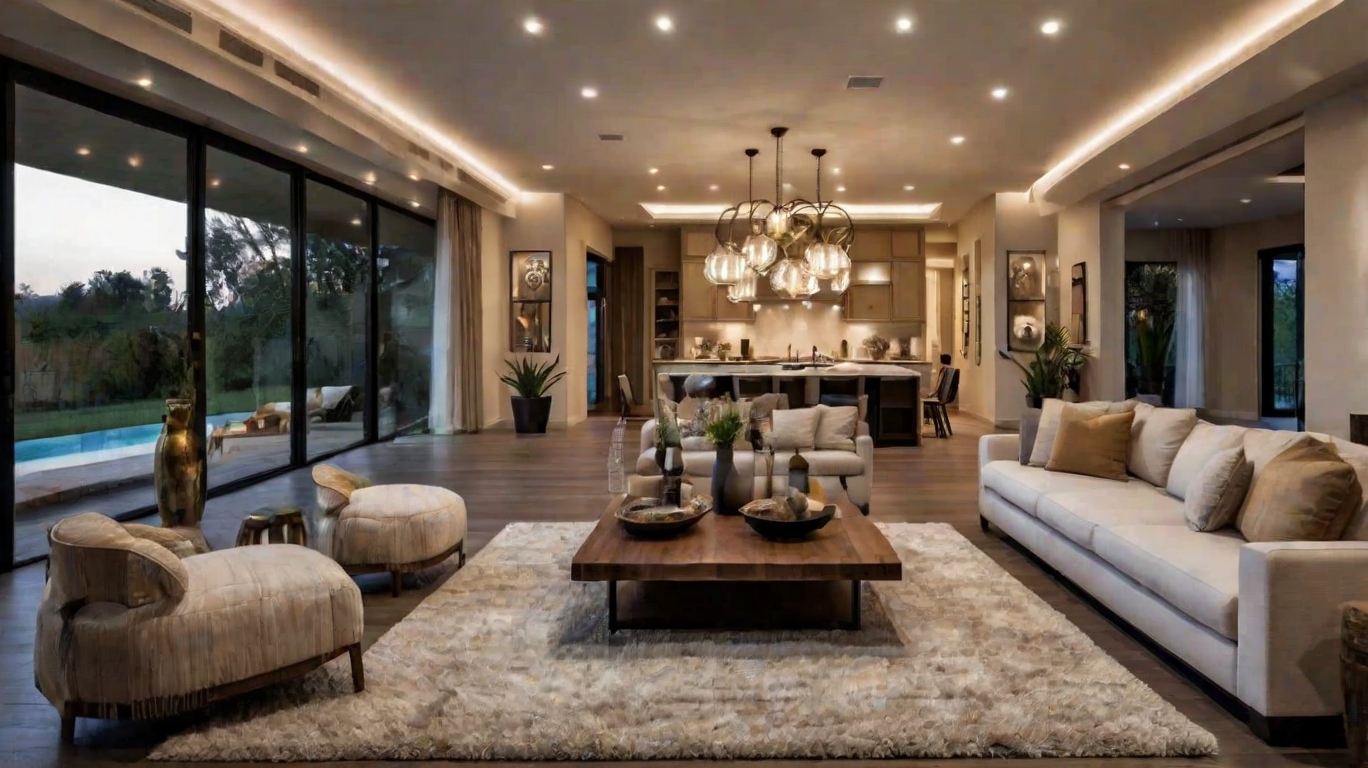Lighting plays a crucial role in setting the ambiance and functionality of any interior space. Whether you’re looking to create a warm and cozy atmosphere or a bright and energizing environment, understanding the different types of lighting can help you achieve your desired effect. In this blog, we’ll explore the various lighting options available, their purposes, and how to incorporate them into your home or office seamlessly.
Ambient Lighting:
Ambient lighting, also known as general lighting, provides an overall illumination to a room. It’s the primary source of light and is typically achieved through the use of ceiling-mounted fixtures like chandeliers, flush-mount lights, or recessed lights. Ambient lighting should be evenly distributed throughout the space, creating a comfortable and inviting atmosphere.
Task Lighting:
As the name suggests, task lighting is designed to provide focused illumination for specific activities, such as reading, cooking, or working at a desk. This type of lighting is often achieved through the use of table lamps, desk lamps, or under-cabinet lighting in the kitchen. Task lighting helps reduce eye strain and improves visibility, making it easier to perform detailed tasks.
Accent Lighting:
Accent lighting is used to highlight specific architectural features, artwork, or decorative elements within a space. It creates visual interest and draws attention to focal points. Examples of accent lighting include track lighting, recessed adjustable lights, or wall-mounted picture lights. Accent lighting can also be used to create depth and dimension by casting shadows and highlighting textures.
Natural Lighting:
Natural lighting, or daylighting, is the use of sunlight as a source of illumination. It’s not only energy-efficient but also has numerous health benefits, including improving mood and productivity. Large windows, skylights, and strategically placed mirrors can help maximize the amount of natural light entering a space.
Decorative Lighting:
Decorative lighting serves both functional and aesthetic purposes. It adds character and style to a space while providing illumination. Decorative lighting fixtures come in a wide range of designs, from chandeliers and pendants to sconces and floor lamps. These lighting elements can be used as statement pieces or to complement the overall design theme of a room.
When it comes to lighting, it’s essential to consider the intended use of each space and the desired ambiance. Combining different types of lighting can create a layered and dynamic effect, enhancing the overall aesthetic and functionality of your interior. Experiment with various lighting options and adjust them according to your needs to create a perfectly illuminated and inviting environment.


Leave a Reply